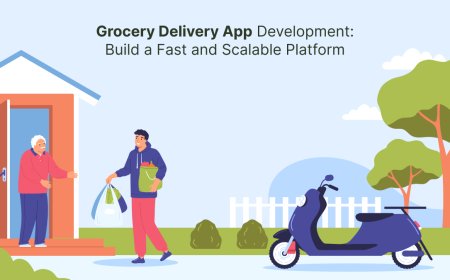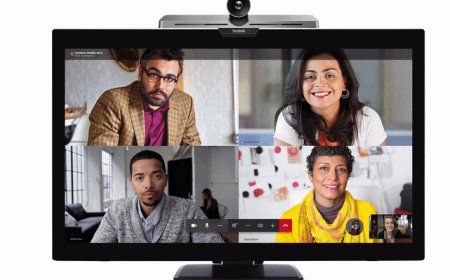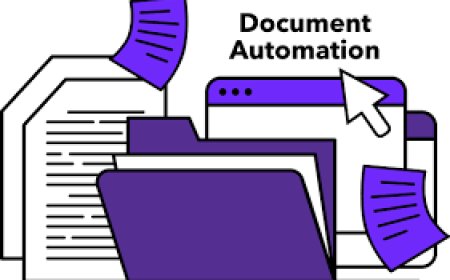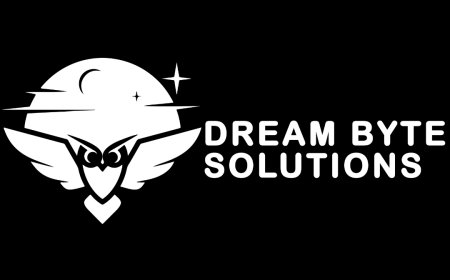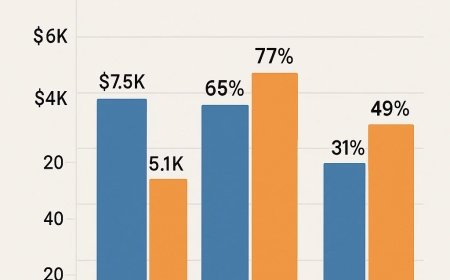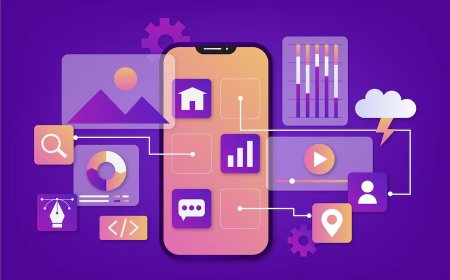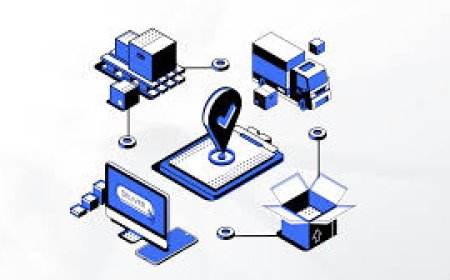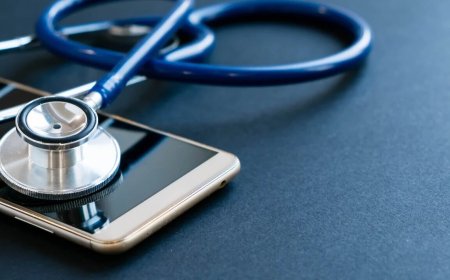How Healthcare Software Development Solutions Ensure Data Security and Compliance?
Discover how healthcare software development solutions ensure data security and compliance with robust encryption, secure workflows, and industry standards.
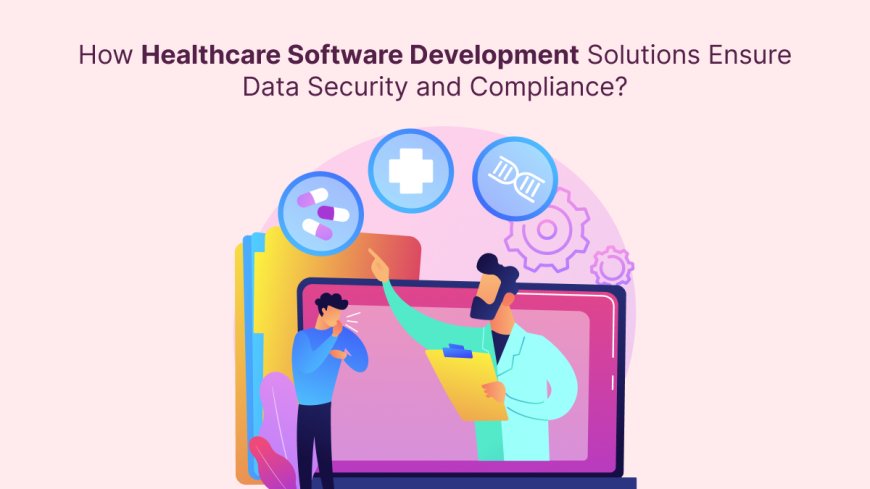
Introduction to Data Security in Healthcare
The healthcare industry is going through a major digital transformation. From electronic health records (EHRs) to mobile health apps and telemedicine platforms, technology has reshaped how medical services are delivered and managed. While this shift has made healthcare more accessible and efficient, it has also introduced serious concerns about data security and regulatory compliance.
Patient data is incredibly sensitive. It includes personal information, medical history, treatment records, insurance details, and more. A single data breach can lead to massive legal, financial, and reputational damage. This is why healthcare providers and tech companies must invest in strong security measures and follow strict data protection laws.
This blog will explore how healthcare software development solutions help organizations ensure the highest levels of data security and maintain compliance with global regulations. We'll also explain how software developers use specific tools, technologies, and practices to protect sensitive health information in every step of the software lifecycle.
Why Healthcare Data Needs Maximum Protection
Nature of Healthcare Data
Unlike regular customer information, healthcare data is deeply personal and private. It includes medical conditions, diagnoses, prescriptions, lab results, and biometric data. If this information falls into the wrong hands, it can be used for identity theft, insurance fraud, blackmail, or even manipulated medical records.
Increasing Cyber Threats
Healthcare organizations are one of the top targets for cyberattacks. Hackers see the value in medical data and are constantly looking for vulnerabilities in outdated systems or poorly secured apps. Ransomware attacks, phishing, and data leaks have become alarmingly common in hospitals and clinics.
This growing threat landscape makes it essential to have software systems that are built with robust security frameworks from the ground up.
Key Components of Secure Healthcare Software Development
1. Data Encryption
Data encryption is one of the most basic yet powerful tools for securing healthcare information. It ensures that even if data is intercepted, it cannot be read or misused. Developers use encryption protocols like AES (Advanced Encryption Standard) to secure data both in transit (when data moves between systems) and at rest (when stored in databases or servers).
Modern healthcare apps also implement end-to-end encryption for communications between patients and providers, especially in telemedicine.
2. Role-Based Access Control (RBAC)
Not everyone should have access to all patient data. Healthcare software includes role-based access control, which limits access based on a users job function. For example, a nurse can view and update certain records, but not financial data or administrative settings.
RBAC not only protects patient privacy but also helps meet compliance standards that require limited access to sensitive information.
3. Secure Authentication
Strong authentication processes are built into healthcare software to ensure only authorized users can log in. This includes multi-factor authentication (MFA), biometric logins (fingerprint or facial recognition), and session timeouts.
Authentication layers help prevent unauthorized access even if login credentials are compromised.
4. Audit Trails and Logging
Healthcare software systems maintain detailed logs of user actions. Every login, data edit, file download, or system access is recorded in an audit trail. This not only helps detect suspicious behavior but is also required by many compliance laws to provide transparency and accountability.
Audit logs are reviewed regularly to spot any irregularities and to track the source of any unauthorized activity.
5. Regular Software Updates and Patch Management
Outdated software is a common entry point for cyberattacks. Healthcare developers follow a patch management strategy to fix security flaws and keep systems up to date.
Automatic updates, routine vulnerability scans, and continuous security testing ensure that the software remains resilient against new threats.
How Compliance Is Handled in Healthcare Software
Understanding the Compliance Landscape
Different countries have different regulations governing how patient data should be handled. For example:
- HIPAA (USA): Health Insurance Portability and Accountability Act
- GDPR (EU): General Data Protection Regulation
- PIPEDA (Canada): Personal Information Protection and Electronic Documents Act
- NHS Data Security and Protection Toolkit (UK)
Each regulation has its own rules for how data is collected, stored, shared, and accessed. Healthcare software developers must understand these laws and build solutions that align with their guidelines.
Consent Management
One of the key aspects of compliance is patient consent. Modern healthcare apps include consent management features where users must agree to how their data will be used. This is especially critical under laws like GDPR, which require clear, informed, and revocable consent.
The software keeps records of when and how consent was given, and whether it was withdrawn.
Data Minimization and Retention Policies
Healthcare software is also designed to collect only the necessary data. This principle of data minimization ensures that personal information is not collected or stored without a clear purpose. Also, developers implement retention policies that automatically delete or archive data after a set period to comply with privacy laws.
Secure Data Sharing and APIs
Sometimes healthcare data must be shared between systemslike between a hospital and a lab, or between a clinic and an insurance provider. This is done using secure APIs (Application Programming Interfaces).
Developers follow industry standards like FHIR (Fast Healthcare Interoperability Resources) and HL7 to build APIs that are both secure and compatible. These protocols allow seamless yet secure data exchange without compromising patient privacy.
Role of DevSecOps in Healthcare Security
Integrating Security Early in Development
DevSecOps is the practice of embedding security directly into the software development lifecycle. In healthcare projects, developers use DevSecOps to identify and fix security issues early, rather than after the app is live.
This includes automated security testing, code reviews, vulnerability scanning, and compliance checks as part of the regular development process.
Continuous Monitoring and Threat Detection
Once the app is deployed, DevSecOps tools continue to monitor it for security breaches, configuration issues, and performance anomalies. This ongoing surveillance helps in real-time threat detection and response, which is crucial for healthcare platforms that run 24/7.
Benefits of Secure and Compliant Healthcare Software
Protecting Patient Trust
Patients are more likely to use digital health tools if they trust that their data is safe. A single breach can damage that trust permanently. Secure software builds patient confidence and supports long-term engagement with the platform.
Avoiding Legal and Financial Penalties
Non-compliance with healthcare laws can lead to massive fines, lawsuits, and in some cases, shutdowns. By investing in compliant software solutions, healthcare providers reduce legal risk and avoid unnecessary financial losses.
Enhancing Operational Efficiency
Secure systems are less likely to experience downtime, breaches, or data loss. This improves workflow efficiency, reduces IT stress, and ensures uninterrupted patient care.
Supporting Innovation with Safety
Developers can introduce new featureslike AI-powered diagnostics, wearable integration, or virtual consultationswithout compromising data security. This allows healthcare organizations to stay competitive while meeting regulatory demands.
Read more: How Healthcare Software Development Is Revolutionizing Patient Care?
Conclusion
In an industry as sensitive as healthcare, data security and compliance arent optionaltheyre absolutely essential. As healthcare organizations continue to adopt digital tools and cloud-based systems, the risk of data breaches and legal non-compliance only grows.
Healthcare software development solutions play a vital role in addressing these challenges. Through encryption, secure access, audit logs, consent management, and regulatory alignment, developers build systems that protect both patients and providers. The integration of DevSecOps practices further ensures that security is an ongoing part of the software's life, not just a one-time setup.
Choosing the right technology partner can make all the difference. Collaborating with a trusted clone app development company ensures not only that your healthcare app is functional and user-friendly, but also secure and legally compliant. These experts bring in-depth knowledge of industry standards, proven security practices, and custom solutions tailored to healthcare needsmaking your software both safe and successful in todays digital world.
FAQs
How do healthcare apps keep patient data secure?
Healthcare apps use methods like encryption, secure logins, access controls, and real-time monitoring to protect patient data from unauthorized access or leaks.
What is HIPAA compliance, and why is it important in healthcare software?
HIPAA is a U.S. law that sets rules for protecting medical data. Software must meet HIPAA standards to ensure patient privacy, avoid legal penalties, and build trust with users.
Can healthcare software share data with other systems securely?
Yes, secure APIs based on standards like HL7 and FHIR allow safe data exchange between systems like hospitals, labs, and insurance providers while keeping patient data protected.
Why is DevSecOps important in healthcare software development?
DevSecOps ensures that security is built into every step of the development process, helping teams detect and fix issues early, maintain compliance, and respond quickly to threats.
How do developers handle patient consent in healthcare software?
Healthcare apps include features where patients can give or withdraw consent for data use. The software also keeps records of this consent to meet privacy laws like GDPR.








&srotate=0)






